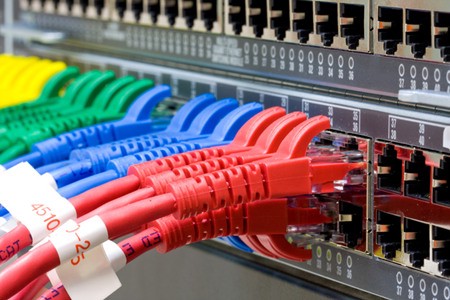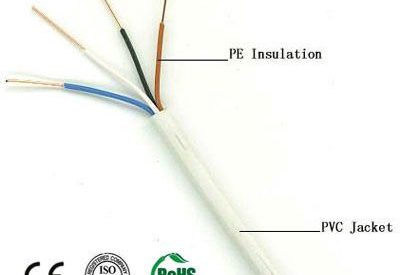Both Ethernet cables and telephone cables are good choices for home network. How to choose wisely for your home networking at the least cost but high performance? This question involves various factors, the sizes and types of files you will be transmitting, your networking planning, budget and Internet connection sharing.
Telephone Cable Network
Most of us hold the view that it is only Ethernet cables can achieve home network connectivity, and this assertion is incorrect. Telephone cables can also operate a network through frequency division multiplexing, which means that the data transmitted over the lines runs at a different frequency than the voice traffic. When you use the phone, data can be sent at the same time via a phone line network as well as fax can be sent via the Internet. Since the data sent by a modem is modulated to the same frequency as voice traffic, it is unnecessary to use the dial-up Internet.

Telephone cable is one of the merits of a phone line network. In the phone line network system, the telephone cable is in place already and thus it is redundant for you to connect them. You can connect a computer to the network in any room with a phone jack.
Ethernet Cable
Ethernet cable, also called Ethernet patch cable or network cable, is the most common type of cable used for home and enterprise network connectivity. Network cables can be divided into several types according to different standard of classification. They can be divided into shielded twisted pair and unshielded twisted pair. Ethernet cables are also rated by Category, Cat5e, Cat6 and Cat6a are the most common types. Cat5e support 1G network while Cat6 and Cat6a support 10G network connectivity respectively. According to the different polish type, they can also be categorized as UPC and APC. Those three kinds of cabling relies on the twisting of the pairs to reduce signal loss and has terminating connectors called RJ45s, which are similar to but slightly larger than the RJ11 phone connectors.

Ethernet Cable Vs. Telephone Cable
? Transmission speed
For high-speed transmission, Ethernet cable is more appropriate for long-haul transmission. Phone networks originally operated at 1 Mbps to 2 Mbps, but newer networks can run at speeds up to 10 Mbps. However, 10 Mbps might be considered a disadvantage to this type of network since even with the newest technology, network speed is capped at 10 Mbps. The data rates after Cat6 (Cat6 is including) all can be up to 10 Gbps. If your demand only limits at some near area within short distance, and then telephone cable is your choice.
? Budget
Relatively speaking, network cables are more expensive than telephone cables. But they do worth the money. If you have a tight budget, telephone cable would be a good choice as well. Merits of Cat6 cable (network cabling) are the availability of premade cables, the ability to run the Ethernet cable anywhere you want to put a computer and the speed of the data transfer. However, you need specialized equipment, in the form of hubs or switches, to make use of this cabling. These hubs and switches cost significantly more than the basic telephone connection equipment and can run in the hundreds of dollars.
? Security
Both telephone cable and Ethernet cable are of high security. But some kinds of network cable are fragile in certain circumstance, such as moist, squirrels in forests, truck with high clearance and etc. And thus, telephone cable is more secure than network cable.
Conclusion
This article mainly discussed about telephone cable and Ethernet cable, and made a comparison in terms of transmission speed, budget and security. The choice between Ethernet cable and phone cable comes down to your need for speed and your available budget at large extent.


